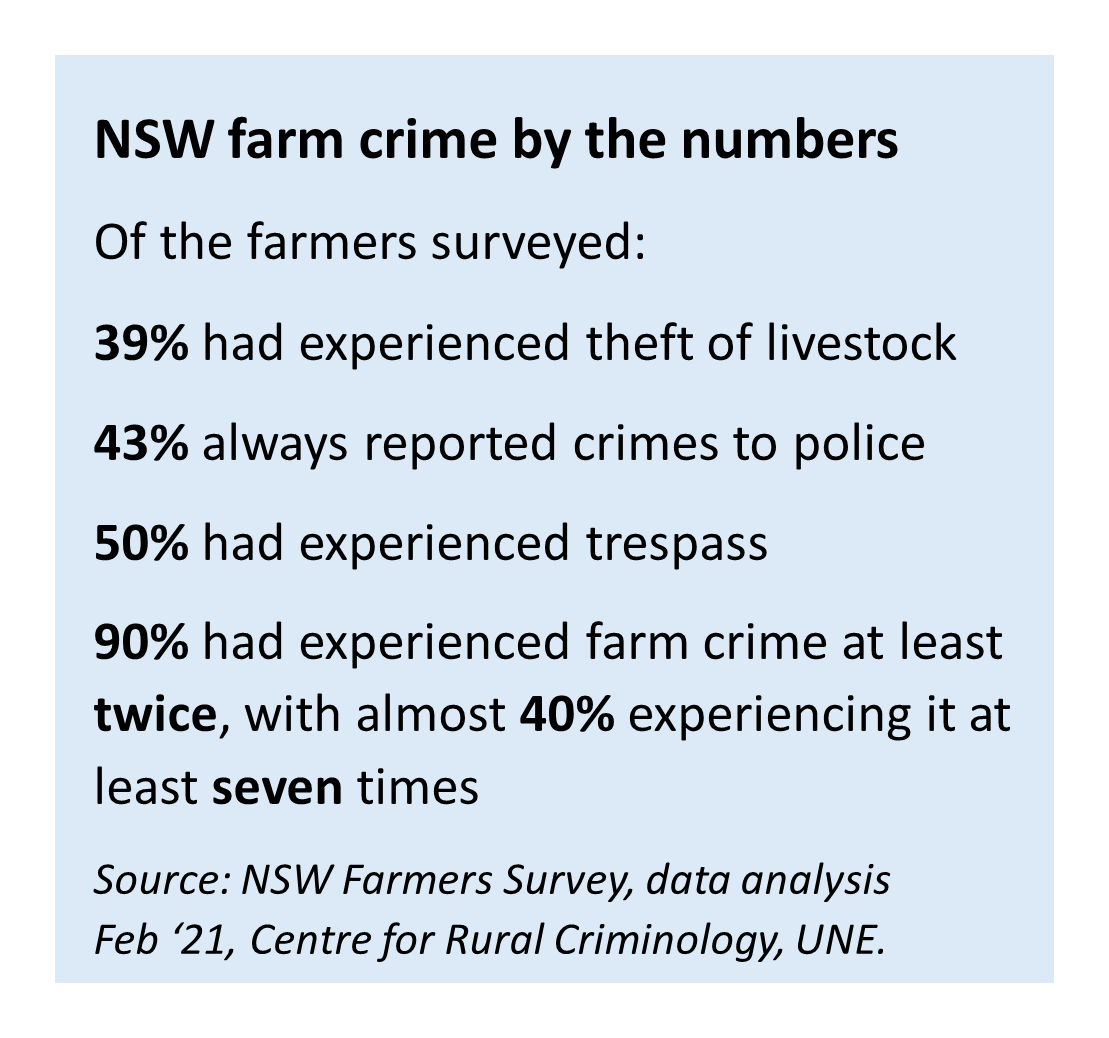Preventing stock theft: Reversing the risk vs reward calculation
More information
Read the Tackling Rural Crime Handbook for tips on securing your property and guidance on how to report a theft.
Learn some more simple steps you can take to protect your livestock from theft.
Review this Livestock Security brochure for guidance on preventing/deterring trespassers and quick strategies to help avoid becoming a victim of stock theft.
Assess the security of your property and identify areas for improvement by referring to the useful checklist in this Farm Security Assessment developed by the NSW Police Force.
Bookmark the NSW Police Rural Crime home page for more resources and advice.
Print out these Private Property and No Trespassing signs to encourage all visitors to seek approval before coming onto your property.
